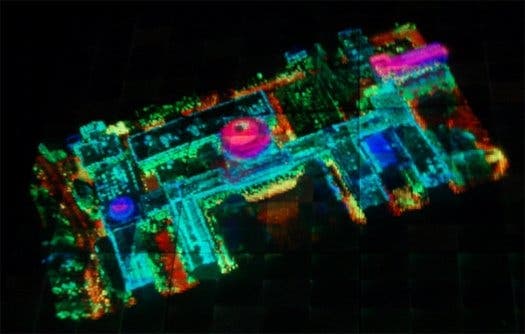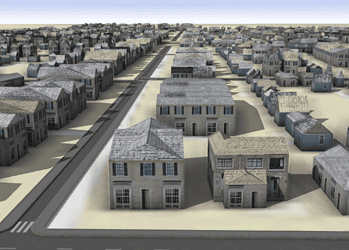
Today’s military generals meet on battlefields that are no longer vast, empty fields waiting to be bathed in blood, but in crowded, urban settings which most of the time represent tactical nightmares. The Defense Advanced Research Projects Agency (DARPA) recently completed a five-year program called Urban Photonic Sandtable Display (UPSD) that creates a real-time, color, 360-degree 3D holographic display to assist battle planners who may experience such distress.
On the UPSD up to 20 participants can zoom in, freeze, rotate and interact with battle zones on the holographic map, which can be as large as 6 feet and have a visual depth of 12 inches. No word on when the product will officially be deployed yet, only know is that the research and development phase of the product is over, conducted by Zebra Imaging of Austin via their won 2005 contract with DARPA.
Although most probably it is a very expensive product, I’m curious about its civilian applications. Business men and architects I’m sure would be all over the place on this one if they had the chance to purchase it. It’s still not Star Wars, but we’re getting there one step at a time.
Check out a video of Zebra Imaging testing out some low tech, first generation 3D holographic displays.






